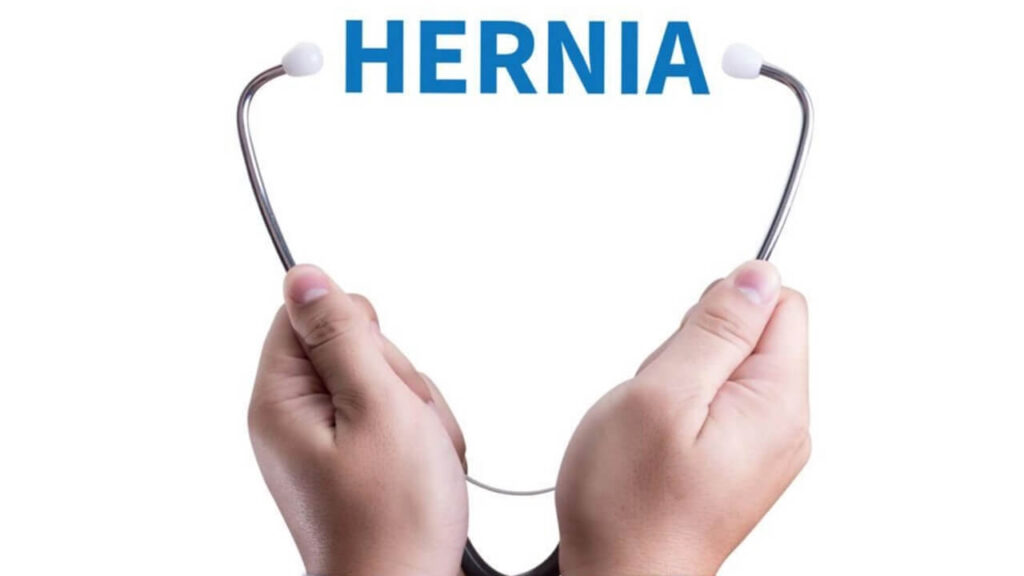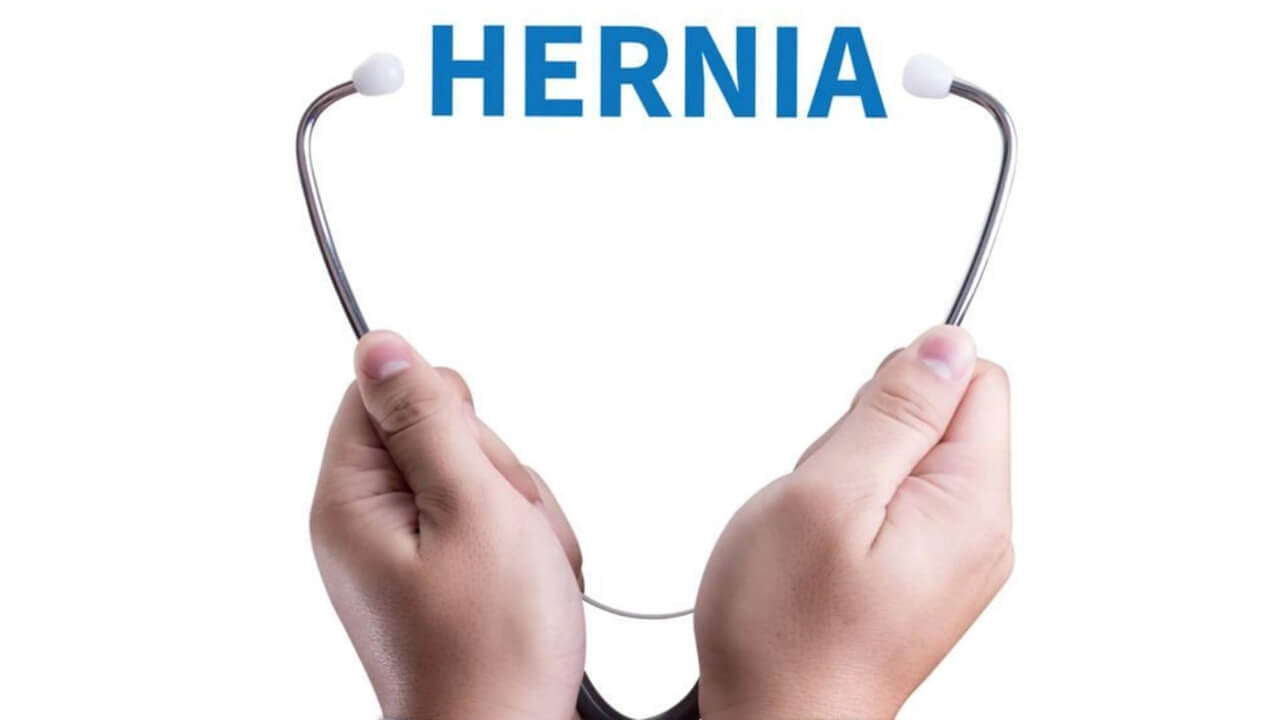
A hernia occurs when an organ or structure from the inside of the body protrudes through a weakened area in the surrounding muscle or tissue. It can happen in various locations, but most commonly in the abdomen or groin. Here are some key points about hernias:
- Symptoms: The primary symptom is a noticeable bulge or lump in the affected area. Other symptoms may include discomfort or pain.
- Causes: Hernias result from muscle weakness and strain. They can be congenital (present from birth) or acquired due to factors like aging, injury, or surgery.
- Types: Common types include inguinal hernia (in the groin), femoral hernia, hiatal hernia (in the diaphragm), and umbilical hernia (near the belly button).
- Treatment: Treatment options vary based on the size and severity of the hernia. Lifestyle changes, medication, or surgery may be recommended.
Remember to seek medical attention if you suspect you have a hernia. 🌿
What are the common types of hernias?
Hernias can occur in various areas of the body. Here are some common types:
- Inguinal Hernia: Typically occurs in the inguinal canals (located on either side of the groin). It affects 27% of men and 3% of women.
- Umbilical Hernia: Occurs near the navel when tissue or parts of the intestine push through a weak area. It accounts for 6-14% of adult abdominal hernias.
- Hiatal Hernia: Parts of the stomach or other organs break through an opening in the diaphragm. Most are “sliding” hiatal hernias.
- Femoral Hernia: Found in the lower groin area near the upper thigh. Women are four times more likely than men to develop femoral hernias.
- Incisional Hernia: Develops after surgery involving the abdominal wall. Roughly 15% of people may develop this type.
Hernias can be reducible (can be pushed back into place) or irreducible (cannot be popped back into position). External hernias can be felt, while internal hernias cannot be felt.
How is a Hernia Diagnosed?
Healthcare providers typically diagnose hernias based on a physical examination. They may ask you to cough, which increases pressure inside the abdominal cavity, causing the hernia to bulge outward. Imaging tests like ultrasound or computed tomography (CT) scans may also be ordered.
Exercises to Prevent Hernias:
Strengthening your core and abdominal muscles can help reduce the risk of hernias. Here are some exercises:
- Plank Hold: Engage your core while holding a plank position.
- Side Plank Hold: Target muscles on each side of the abdomen.
- Ab Wheel Rollout: Challenges stability during movement.
Plank Hold: Engage your core by holding a plank position (forearms and toes) for about 30 seconds. Focus on maintaining a straight line from heels to head.
Side Plank Hold: From a side-lying position, bridge your hips up, creating a straight line from shoulders to feet. Hold for 20 to 30 seconds on each side.
Ab Wheel Rollout: This exercise challenges stability while moving, helping prevent improper technique that could increase hernia risk.
Focus on progressive strengthening to increase the resilience of structures surrounding internal organs and tissues.
Remember to consult a healthcare professional before starting any exercise program. 🌿
What are the risk factors for developing a Hernia?
Several factors contribute to the development of hernias:
- Age: As you get older, your muscles may weaken, making hernias more likely.
- Gender: Men are more prone to inguinal hernias, while women are more likely to have femoral hernias.
- Family History: A family history of hernias can increase your risk.
- Chronic Cough or Allergies: Conditions causing chronic sneezing or coughing.
- Chronic Constipation: Straining during bowel movements.
- Obesity: Excess weight puts pressure on the abdominal wall.
- Occupations Involving Heavy Lifting or Standing: Increased strain on muscles.
- Previous Surgeries: Surgical incisions can weaken the abdominal wall.
- Pregnancy: Pregnancy can strain the abdominal muscles and increase the risk of hernias.
- Smoking: Smoking weakens tissues and can contribute to hernia development.
These factors can contribute to the weakening of abdominal muscles and increase the likelihood of hernias.
Exercises to Strengthen Abdominal Muscles:
Strengthening your core can help prevent hernias. Here are some exercises:
- Abdominal Crunches: Lie on your back, raise your head and shoulders off the floor, and tighten your abdominal muscles.
- Bridge: Raise your hips off the floor while keeping your back neutral.
- Single-Leg Abdominal Press: Lift one leg and push your hand against the knee while using abdominal muscles.
- Variations: Try opposite hand on opposite knee or hand on the outside of the knee.
Focus on deep breathing and the transversus abdominis muscle during these exercises.
How is an Inguinal Hernia different from other types of hernias?
Inguinal Hernia:
Occurs in the inguinal canal (groin area).
More common in men.
Can be direct (through the wall) or indirect (enters from the top).
Femoral Hernia:
Occurs below the inguinal ligament.
More common in women.
Always treated surgically.
Strangulation Risk:
Inguinal hernias are less likely to strangulate.
Femoral hernias have a higher risk of strangulation.
Treatment:
Inguinal hernias may be treated non-surgically.
Femoral hernias always require surgical treatment.
Remember to consult a healthcare professional for personalized advice and to discuss any exercise regimen. 🌿
Preventing Abdominal Swelling After Eating:
While abdominal swelling can have various causes, here are some general tips to prevent it:
- Eat Smaller Meals: Consuming smaller, more frequent meals can reduce bloating.
- Chew Thoroughly: Properly chewing your food aids digestion and minimizes gas.
- Avoid Carbonated Drinks: Carbonated beverages can lead to bloating.
- Limit High-Fiber Foods: Gradually increase fiber intake to avoid sudden bloating.
- Stay Hydrated: Dehydration can worsen bloating.
- Avoid Trigger Foods: Some foods (like beans, cabbage, and onions) can cause gas and bloating.
- Exercise Regularly: Physical activity helps maintain healthy digestion.
- Manage Stress: Stress can impact digestion and contribute to bloating.
Is there any home remedy to relieve bloating?
Try these natural approaches:
- Peppermint Tea: Peppermint has antispasmodic properties that may ease bloating.
- Ginger: Ginger tea or ginger capsules can soothe the digestive system.
- Chamomile Tea: Chamomile has calming effects and may reduce bloating.
- Activated Charcoal: Some people find relief from bloating by taking activated charcoal supplements.
- Probiotics: Consuming foods rich in probiotics (like yogurt) can promote gut health.
- Warm Compress: Applying a warm compress to your abdomen may help relax muscles.
- Fennel Seeds: Chew fennel seeds or drink fennel tea to alleviate bloating.
Remember to consult a healthcare professional if you experience persistent or severe symptoms. They can provide personalized advice based on your specific situation. 🌿
What are the Symptoms of a Hernia?
Hernias can manifest in various ways, depending on their type and location. Here are some common symptoms:
- Bulge or Lump: You might notice a visible bulge or lump in the groin or abdomen.
- Pain or Discomfort: Hernias can cause pain, burning, aching, heaviness, or discomfort, especially during activities like coughing, straining, or lifting.
- Pulling Sensation: Some people experience a pulling sensation around the lump or bulge.
Let’s address each of your questions:
What are the treatment options for Hernias?
The treatment approach for hernias depends on factors like size, symptoms, and overall health. Here are some options:
Observation: Small, asymptomatic hernias may be monitored without intervention.
Surgery: Large or symptomatic hernias often require surgical repair. Options include:
- Open Hernia Repair: An incision is made in the groin, and a synthetic mesh is placed to reinforce the weakened area.
- Laparoscopic Hernia Repair: Minimally invasive surgery using small incisions and a camera to guide the repair.
- Robotic Hernia Repair: Similar to laparoscopic repair but with robotic assistance.
Medication: Antacids and proton pump inhibitors can help manage discomfort due to gas in the abdomen.
How to incorporate more fermented foods into diet?
Fermented foods are rich in probiotics. Here are ways to include them in your diet:
Breakfast:
- Add yogurt, kefir, or buttermilk to smoothies or top granola.
- Try homemade coconut yogurt.
Lunch:
- Add fermented pickles to sandwiches or use fermented mayo.
- Tuck lacto-fermented dilled carrot chips into bagged lunches.
Dinner:
- Have a small portion of raw sauerkraut.
- Stir homemade sour cream or juice from fermented veggies into soup.
- Serve lacto-fermented chutneys with entrées.
Snacks and Extras:
- Pair chips with cultured dairy ranch dip.
- Snack on old-fashioned lacto-fermented dill pickles.
- Make water kefir sodas or lacto-fermented ginger ale.
Remember to consult a healthcare professional for personalized advice on hernia treatment and probiotic supplementation. 🌿
What are the common complications of hernias?
Hernias can lead to serious complications. Here are two main ones:
- Obstruction (Incarceration): Part of the intestine gets stuck in the muscle layer it’s pushing through. Symptoms include nausea, vomiting, abdominal pain, and a painful lump in the groin area.
- Strangulation: Blood flow to the trapped section of intestine or other tissue is cut off. It’s a life-threatening condition that requires emergency surgery. Symptoms include nausea, vomiting, fever, sudden abdominal or groin pain, and a bulge that turns red, purple, or dark.
Fermented Food Recipes:
Fermented foods are not only delicious but also beneficial for gut health. Here are some recipes to try:
- Homemade Sauerkraut: Making your own sauerkraut is easier than you think. All you need is some chopped green cabbage, kosher salt, and a Mason jar. The results are far better than store-bought sauerkraut.
- How To Make Kombucha Tea at Home: Learn to make kombucha, a tangy drinkable tea with various flavors. It’s made from sweetened tea and fermented with a SCOBY (symbiotic culture of bacteria and yeast).
- How To Make Milk Kefir: Similar to drinkable yogurt, milk kefir is easy to make at home using whole milk and kefir grains. You can reuse the grains indefinitely.
- How To Make Kimchi: Kimchi is a well-loved fermented food. Try this simple Mason jar recipe to make your own.
- Lacto-Fermented Mixed Pickles: Create delicious, nutritious pickled vegetables at home using salt. It takes just minutes and provides gut-loving benefits.
How to choose the right probiotic for your needs?
When selecting a probiotic supplement:
- Research Your Condition: Look for strains supported by science for your specific needs.
- Quality Matters: Choose a trustworthy brand with high grades.
- Consider Strains: Pay attention to genus, species, and strain names. All three matter.
- Colony Forming Units (CFUs): Check how much bacteria you’re getting per dose.
- Consult Your Doctor: Ask your doctor for personalized recommendations.
Remember to consult a healthcare professional for personalized advice on hernia treatment and probiotic supplementation. 🌿
What are the surgical options for hernia repair?
Hernia repair surgery is the most common treatment. Here are the main types:
Open (Traditional) Hernia Repair Surgery:
- A surgeon makes a single incision to operate on the herniated tissue.
- Organs and tissue are put back in place, and stitches or surgical mesh strengthen the area.
Laparoscopic Hernia Repair Surgery:
- Also called “keyhole surgery.”
- Surgeons use tiny incisions (usually three or four) and a laparoscope (video camera) to repair the hernia.
Robotic Hernia Repair Surgery:
- Similar to laparoscopy but uses robotic instruments operated by the surgeon.
The choice depends on factors like hernia type and complexity.
What is the recovery time after Hernia Surgery?
The recovery timeline after hernia surgery can vary based on individual factors. However, here’s a general outline:
- Immediate Post-Surgery: You’ll spend time in the recovery room, and once you can defecate and urinate normally (without complications), you’ll be cleared to leave.
- Deep Breathing: Practice deep-breathing exercises within the first 24 hours to aid recovery.
- Showering: Generally, you can shower 24 to 48 hours after surgery, depending on wound dressing and type of surgery.
- Driving: Avoid driving for at least 48 hours after hernia surgery due to anesthesia effects.
- Full Recovery: Usually, it takes four to six weeks for a full recovery from hernia surgery.
What are the dietary restrictions after Hernia Surgery?
After hernia surgery, your diet plays a crucial role in healing and recovery. Here are some general guidelines:
Immediate Post-Surgery:
- For the first 12 to 24 hours, stick to a liquid diet. This helps manage nausea and vomiting from anesthesia.
- Opt for items like milk, plain yogurt, sorbet, and strained creamed vegetables.
Healing Phase:
- Gradually transition to soft foods that won’t strain your abdominal or intestinal muscles.
- Include options like watermelon, apples, pears, bananas, green beans, zucchini, whole-grain rice, and oatmeal.
- Prioritize lean protein sources like fish, chicken breast, and softer cuts of beef and pork.
- Stay hydrated and focus on fiber-rich foods.
What are the best exercises after Hernia Surgery?
After hernia surgery, it’s essential to ease back into exercise gradually. Here are some recommendations:
- Light Walking: Start with short walks outside or on a treadmill in the first few days after surgery.
- Stationary Bike: Gently ride a stationary bike in the weeks following surgery.
- Core Strengthening: Planks can help strengthen your core six to twelve weeks after surgery.
- Avoid High-Impact Activities: Refrain from jumping, running, and other high-impact exercises for at least three to six months.
What are the best stretches after Hernia Surgery?
After hernia surgery, gentle stretches can help alleviate tightness and discomfort. Here are some recommended stretches:
- Preliminary Groin Stretch: Gently stretch the inner thigh and groin area.
- Hip Flexor Stretches: Stretch the front of your thighs to maintain flexibility.
- Adductor Mobilization: Mobilize the adductor muscles (inner thigh).
- Advanced Stretch: Gradually increase the intensity of your stretches.
Remember to perform these exercises without pain and gradually ease into them. Proper posture and walking tall are also essential during your recovery.
What are the best yoga poses after Hernia Surgery?
Yoga can aid in strengthening core muscles and fascia, which reduces the risk and aids in hernia recovery without undue pressure on the abdomen. Here are some helpful poses:
- Butterfly Pose (Titli Asana): Gentle hip opener.
- Boat Pose (Navasana): Strengthens core muscles.
- Cat/Cow Pose (Chakravakasana): Promotes spinal flexibility.
- Thunderbolt Pose (Vajrasana): Aids digestion.
- Camel Pose (Ustrasana): Stretches the abdomen.
- Seated Forward Fold (Paschimottanasana): Lengthens the spine.
- Wind Relieving Pose (Pawanmuktasana): Eases gas and bloating.
- Raised Feet Pose (Uttanpadasana): Strengthens abdominal muscles.
- Fish Pose (Matsyasana): Opens the chest and stretches the abdomen.
Remember to consult a healthcare professional for personalized advice on hernia recovery and gut health. 🌿
What are the best yoga poses for digestion?
Yoga can aid in improving digestion and overall gut health. Here are some beneficial poses:
- Cat-Cow Pose (Chakravakasana): Alternating between arching and rounding your spine stimulates digestion.
- Downward-Facing Dog Pose (Adho Mukha Svanasana): Inverted position encourages blood flow to the digestive organs.
- Seated Forward Bend (Paschimottanasana): Lengthens the spine and massages the abdominal organs.
- Supine Twist (Supta Matsyendrasana): Gentle twist stimulates digestion.
- Bridge Pose (Setu Bandhasana): Opens the chest and stretches the abdomen.
- Legs Up the Wall Pose (Viparita Karani): Relaxes the nervous system and aids circulation.
- Child’s Pose (Balasana): Calms the mind and gently compresses the abdomen.
- Camel Pose (Ustrasana): Stretches the front of the body and stimulates digestion.
- Spinal Twist (Ardha Matsyendrasana): Twisting motion aids in detoxification and digestion.
- Corpse Pose (Savasana): Deep relaxation supports overall well-being.


































It’s actually a great and helpful piece of information. I am happy that you shared this useful information with us. Please stay us up to date like this. Thanks for sharing.
Thanks , I have recently been looking for info about this topic for ages and yours is the best I have discovered till now. But, what about the bottom line? Are you sure about the source?
Great web site. Plenty of useful info here. I am sending it to a few friends ans also sharing in delicious. And naturally, thank you for your sweat!